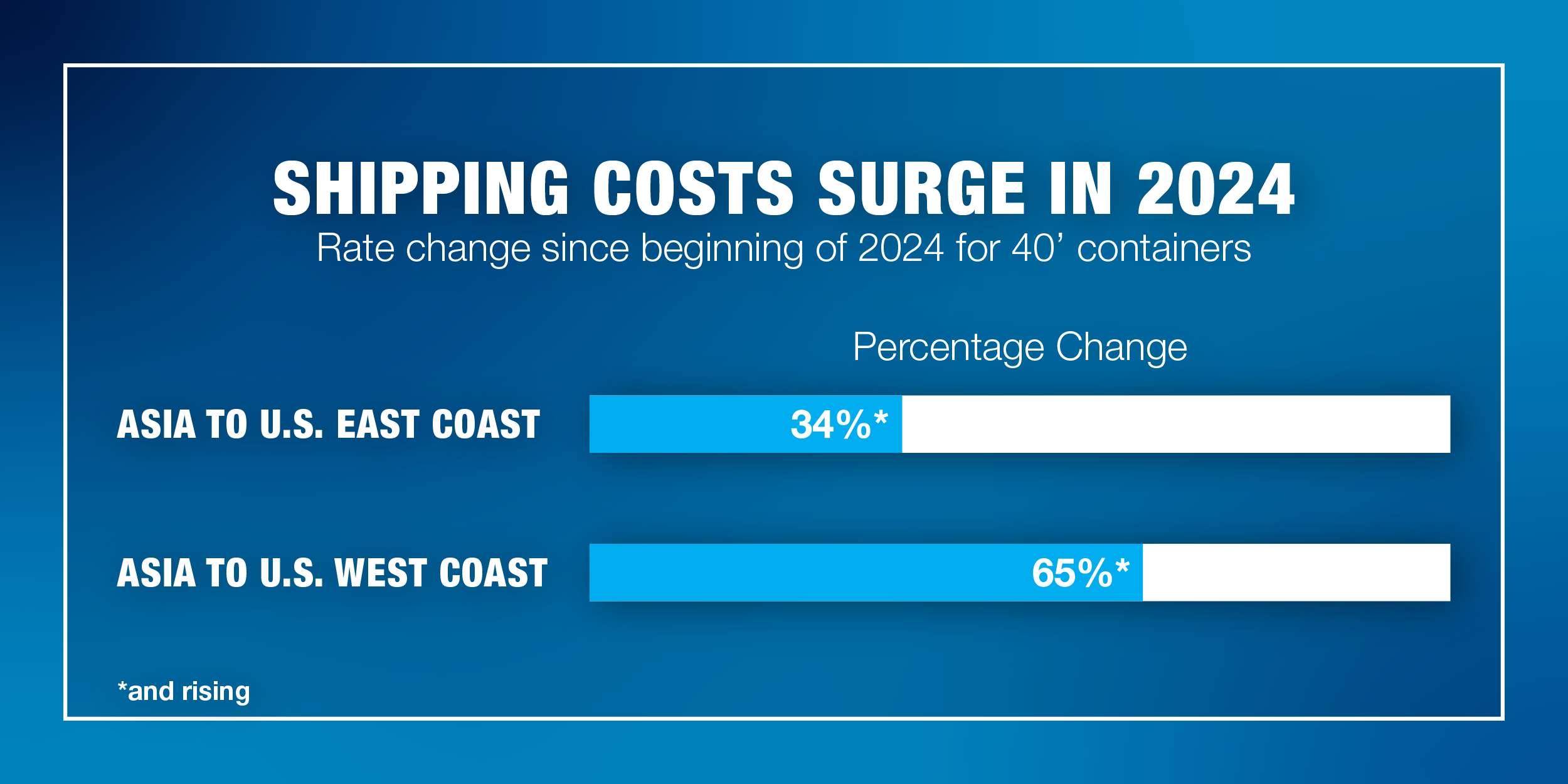The importance of diversifying supply chains has never been more evident than in the face of recent challenges. In the aftermath of the chaotic events of 2020, what was once considered an optional, but wise risk mitigation strategy has now become an absolute necessity. Despite the clear benefits, many companies remain apprehensive about shifting away from an all-Asian supply chain, primarily due to concerns over increased costs.

The repercussions of this hesitancy are becoming increasingly apparent, especially in light of the current rise in ocean shipping rates from Asia to the U.S. This surge, triggered by Houthi attacks in the Red Sea, has almost doubled shipping costs since the beginning of the year. With these disruptions occurring during a crucial period when companies are preparing their inventory for Chinese New Year and Vietnamese Tet, vessels are being forced to seek alternative routes to their final destinations, leading to extended lead times and exorbitant price hikes. What's noteworthy is that industry analysts anticipate these spikes to persist or even escalate over the next several months.

However, companies that made the strategic decision to diversify their supply chain by incorporating nearshoring in recent years find themselves at a significant advantage. By establishing manufacturing partners in popular manufacturing countries like Costa Rica or Mexico, these companies are less susceptible to disruptions affecting international supply chains. This adaptability not only shields them from current challenges but positions them as more resilient players in a fluctuating global landscape.
Strategic Advantages of Nearshoring During Supply Chain Disruptions
One of the primary benefits of nearshoring is the reduction in transportation costs and time. Proximity enables more cost-effective and efficient transportation, mitigating the risks associated with lengthy shipping routes. Additionally, nearshoring fosters resilience against global disruptions, such as natural disasters, geopolitical conflicts, or public health crises. As witnessed in the Red Sea scenario, being closer to your market acts as a buffer, minimizing susceptibility to such events.
Moreover, a diversified supply chain enhances flexibility and enables swift adaptations to changing market conditions. This agility allows for adjustments in production volumes, product variations, or shifts in demand, contributing to a more responsive supply chain. Distributing strategic risks across multiple locations further fortifies the supply chain, making it less vulnerable to region-specific disruptions.
Communication is key during times of crisis like the Houthi attacks, and nearshoring improves communication. With closer geographical proximity, time zone differences are often minimal, facilitating quicker coordination, issue resolution, and tactical adjustments.
The inflation of ocean freight rates from Asia underscores, once again, the critical importance of diversification and nearshoring. Companies that embraced these strategies are not only in a better position to weather the storm but are also positioned for long-term success.




.jpg?width=176&height=56&name=MR_associatedNetwork_logo%20(1).jpg)